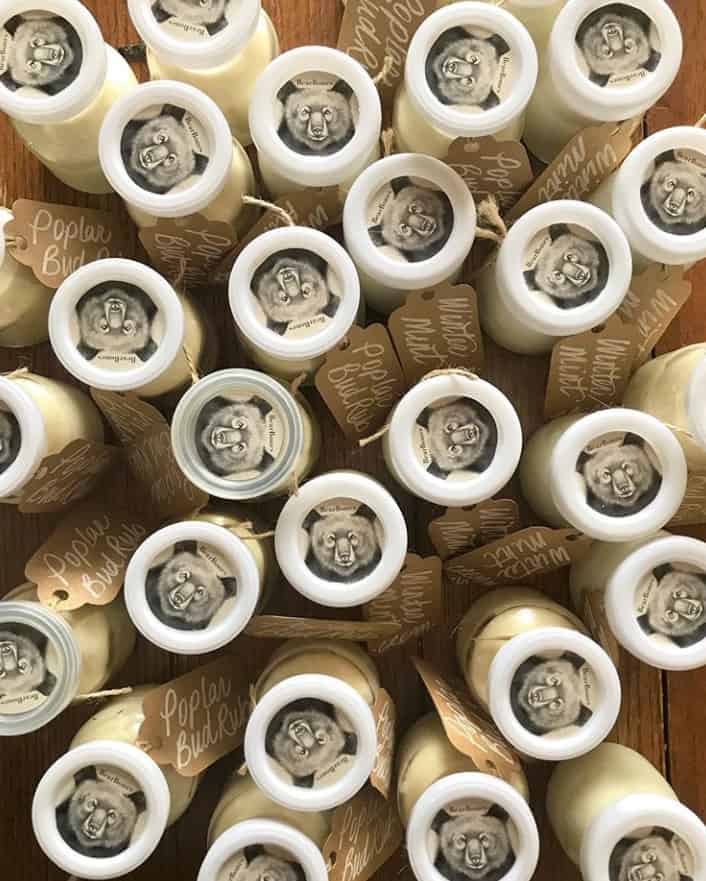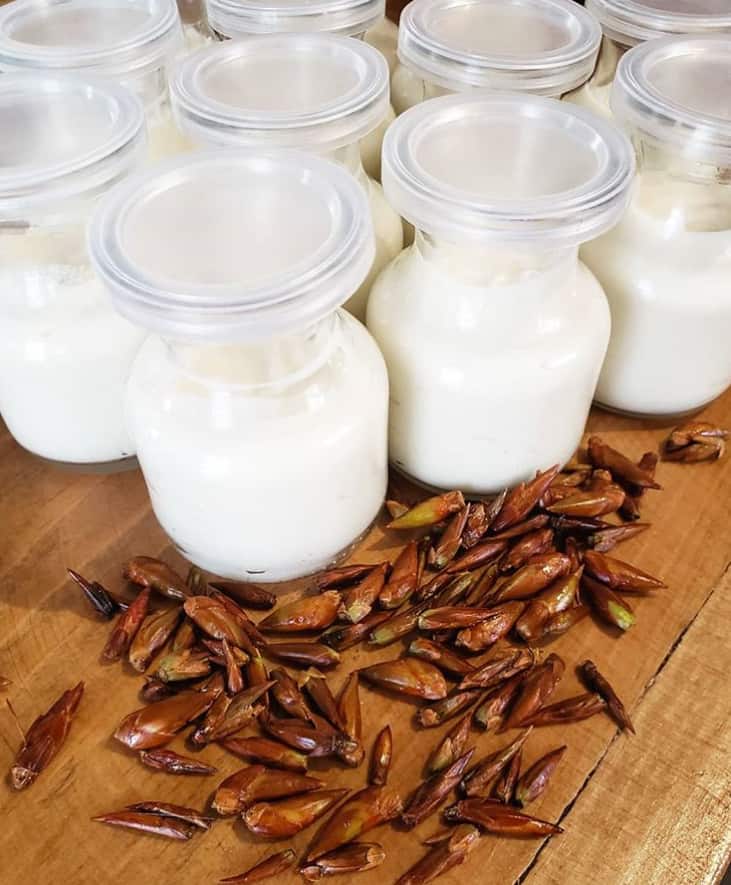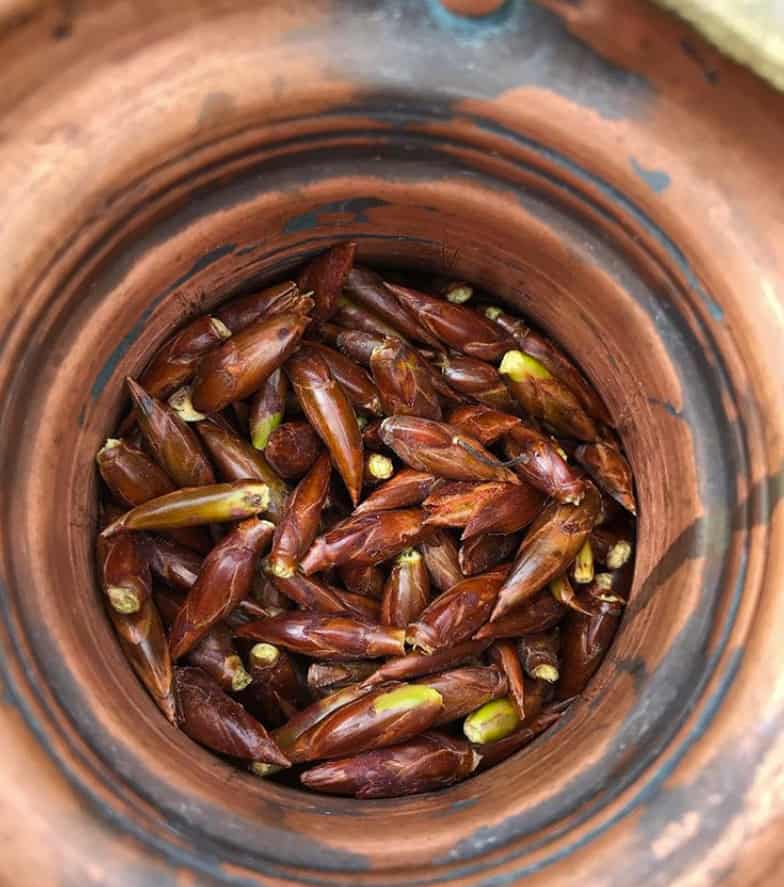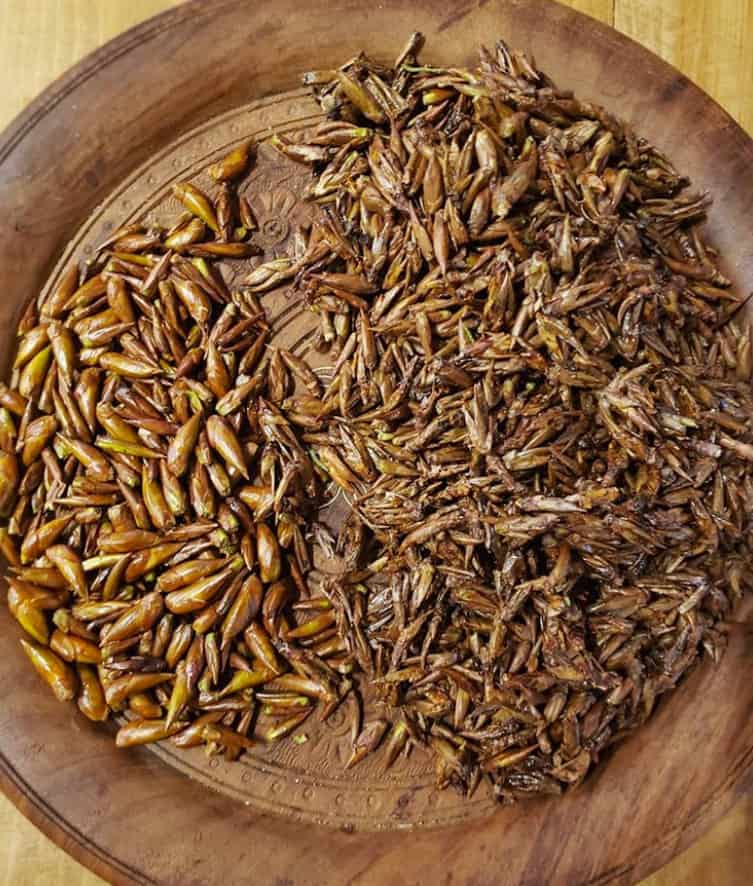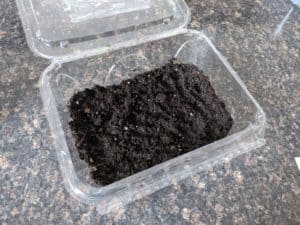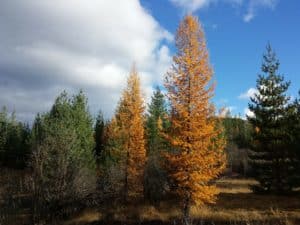Have you ever parked a car under a tree thinking “What a perfect spot! Shaded with a beautiful view”… just to come back to see some super sticky, golden-coloured sap all over the car? Well, don’t get too upset because that may just be a poplar tree offering you medicine!
“Maanazaadi” is an Anishinaabemowin word, which translates to a balsam poplar; a balm of Gilead tree in English. The resin/sap from the buds and bark of poplar trees have been used by many Indigenous nations across Turtle Island as traditional medicine for centuries. It is known to be the origin of the medication Aspirin as it contains salicin, which is the active anti-inflammatory ingredient. While many people believe willow bark to be the source and origin of the active ingredient in Aspirin, Indigenous nations with an intimate relationship with the land know this origin to be poplar trees. As the salicin quantities in the sap/resin are higher than in willow bark (although, this bark is still a respected medicine to Indigenous groups).
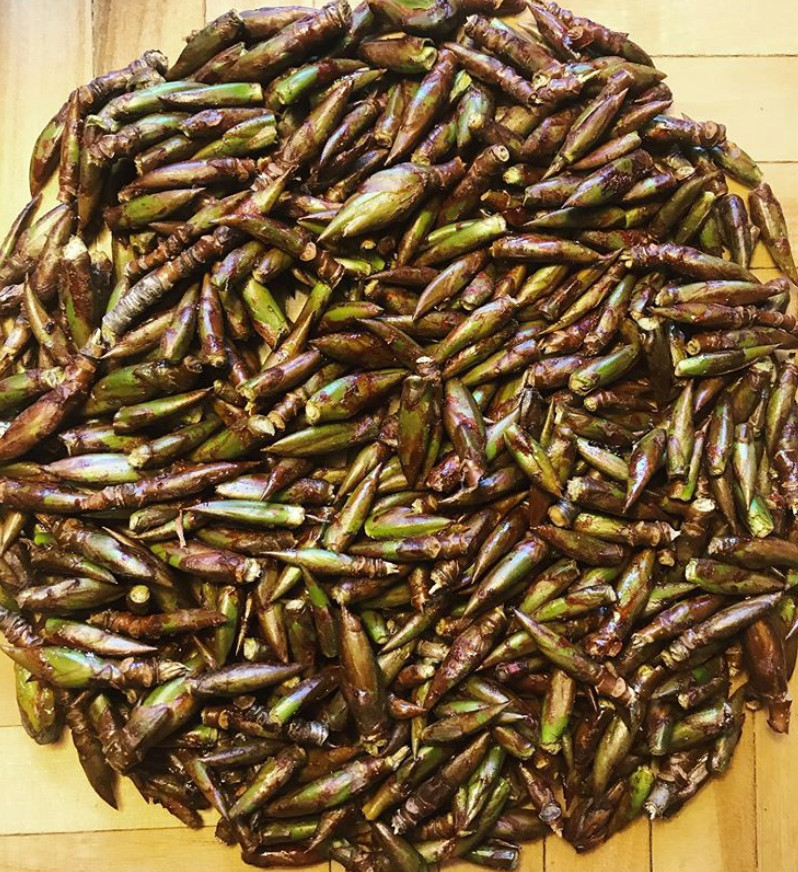
photo of fresh poplar buds
Traditional Uses
Maanazaadi, most often the resin from buds and bark, have been used to treat many different conditions and illnesses. From inflammation, common colds, sore throat, nasal and chest congestion, mild cuts, to infections, gut health issues, scrapes and burns. Even the leaves have healing properties and were often chewed and applied to insect stings and bites.
Using poplar as medicine can take several forms. The buds are harvested in the spring before they open and are boiled to make tea, which is great for relieving cold symptoms. When making the tea, you’ll notice the resin from the buds will be collected on the sides of the pot and instead of trying to clean it away, it can be collected and applied to minor scrapes and cuts as a way to increase the speed of healing.
Other ways to harvest and use poplar buds as medicine include making salves, oils or a facial/body steam. Salves can be applied topically to nose, chest and back areas to relieve coughs and congestion. Oils created from poplar medicine, traditionally made with deer or bear grease, can also be applied topically to sore muscles, arthritic joints, sprains and strains, and is fantastic for healing minor burns due to its antiseptic properties and skin cell proliferation abilities.
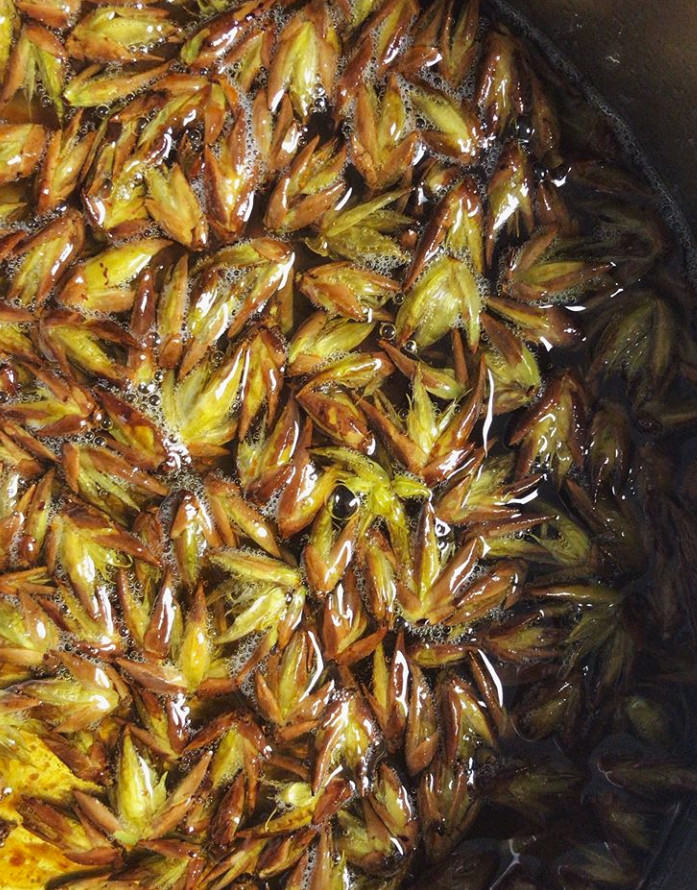
photo of poplar buds simmering in bear fat!
One health and beauty business BearBonesBalm, owned and operated by Hillary Clermont, an Indigenous woman from Georgian Bay, Ontario is using bear grease and traditional Anishinaabeg plant knowledge to create all natural skin care products. Some top ingredients in her skin care line include: bear fat, poplar buds, lavender, juniper berries, cedar, among many others! Find the available products here and follow BearBonesBalm on Instagram @bearbonesbalm for updates.
photo of finished BearBonesBalm products including Poplar Bud Rub and Winter Mint
Fun Fact #1: Many generations ago, First Nation Gwich’in peoples- of what is now known to be British Columbia, Alaska, Yukon and Northwest Territories- used to burn the bark of poplar trees and mix it in food made for dogs, as it was known to help control worms and keep the dog’s fur in good condition.
Fun Fact #2: Poplar medicine is well known in the natural world and is often used by bees! They harvest the resin from poplar buds to make propolis; a substance used to seal their hives to prevent unwanted bacterial and fungal growth.
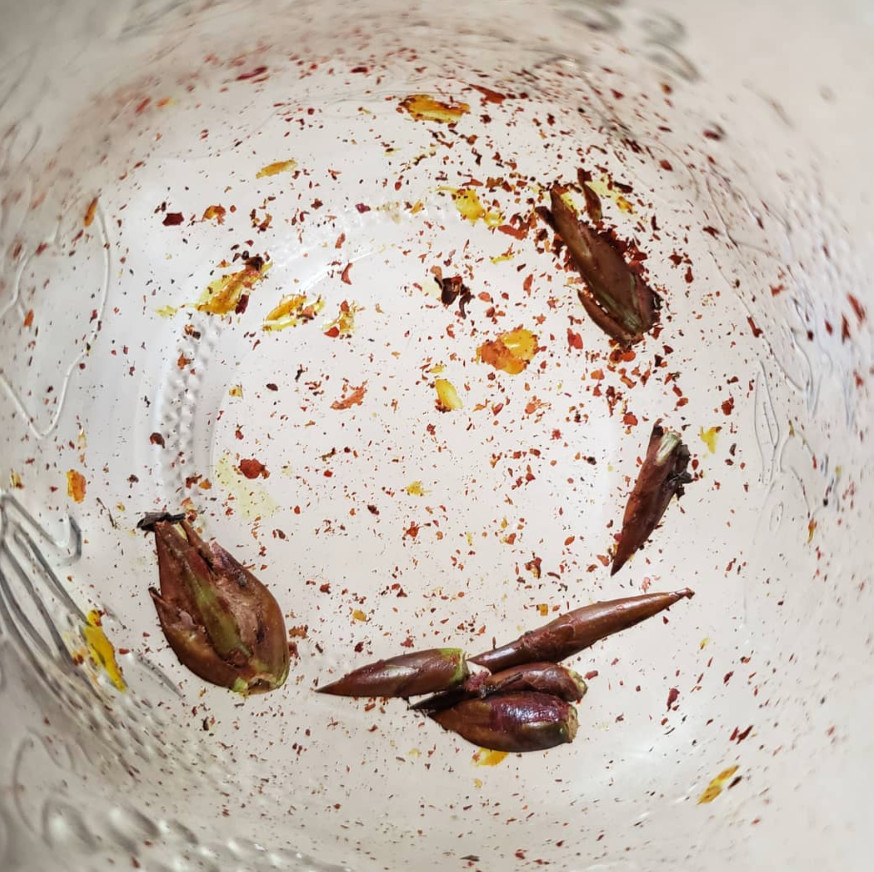
photo of polar bud resin
There is no doubt that maanazaadi is a beautiful and powerful medicine, but before you go out to harvest and benefit from it’s healing properties, there are a few things to remember. This traditional medicine needs to be treated with respect and honour before it can be asked to do any work for you. When you decide to harvest, the first thing you need to do is greet the tree, tell it why you are asking for its medicine and give thanks for providing.
Traditionally, Indigenous groups, particularly First Nations peoples will offer tobacco before harvesting anything as a way to give thanks and create a direct line of communication with the spirit of the medicine. The next tip to remember is to never overharvest – only take what you need, and never harvest the terminal bud – you want to ensure more buds and leaves will be produced to keep the tree healthy and alive.
A general rule of thumb is to only take 1/3rd of buds from a single branch and don’t take from a tree that has been previously harvested that season. However, if you’re lucky enough to find a gift of a broken branch with healthy buds on the forest floor, be sure to harvest all of the buds as a way to honour that sacrifice and ensure none of that medicine is wasted.
Science of Salicin
Salicin present in natural medicine is a powerful healer and has had a great impact on our health for centuries, but why is it so powerful? How do our bodies process it?
Since salicin is found naturally occurring in poplar and willow plant medicine, it is already one step ahead of some of its derivatives such as salicortin or tremulacin. Salicin derivatives, once entered into the body have to convert into salicin. This usually occurs in the stomach or small intestine where it may be absorbed, but for the most part, the salicin continues to be carried to the distal ileum or colon. Once there, gut flora get to work and convert the salicin into salicyl alcohol. From there, the salicyl alcohol is converted into the main active form, salicylic acid, through absorption and oxidation in blood, tissue and liver.
The reason why salicin found in poplar trees and willow bark was eventually transformed to modern medicine (i.e. Aspirin) is because scientists in the 19th century found salicylic acid to be more readily synthesized (therefore more economic and profitable) over salicin – even though they already knew that salicin in plants was naturally converted to salicylic acid quite rapidly in the body. The issue with this development was that the synthesized ingredient was found to be a major gastric irritant, therefore, Aspirin was created as a less irritating option – although, is still recognized today to be a mild gastric irritant.
The science of salicin as modern medicine in Aspirin is the perfect example of the importance of traditional Indigenous plant knowledge to human health and modern science. If the scientists who created Aspirin had the understanding of traditional plant knowledge and the interconnected relationship with the natural world, perhaps they would have preferred naturally occurring salicin as a treatment for ailments. Ashkaakamigokwe (Mother Earth) has already provided all living things with an abundant yield of bioavailable salicylic acid, without the gastric irritation.
photo of fresh poplar buds and 3 different seasons of poplar bud harvests
Resources
- Andre, A.T. (2006). Nan t’aih nakwits’inahtsìh: the land gives us strength: the medicine plants used by Gwich’in people of Canada’s western Arctic to maintain good health and well being (Master’s thesis, University of Victoria, Victoria, British Columbia).
- Gwich’in Social and Cultural Institute. (2016). Poplar.


